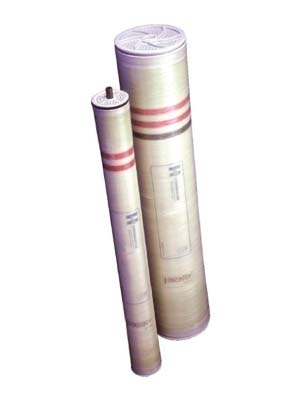
Composite Membrane

Composite membranes comprises three layers the non woven fabric, a polyamide layer. The latter is formed through surface polymerization of trimethylene chloride and meta phenyldiamin. Ideally, the network structure should developfully but the chlorine – carboxyl group also reacts quickly with water to form a carboxyl group that produces a surface with a negative charge.
This secondary reaction creates a less crosslinked polymer structure and a negatively charged surface. While the lower crosslinked structure reduces a membrane’s durability, the negative charged surface leads to interations with ions that affect membrane rejection. This interaction is depending on the ionic composition of the feed and lead to changing rejection if the feed changes.
The data sheet values for RO membranes are comparable under the specified test conditions, but the differences are apparent in process flows with different cations and anions. Rejection in the case of inorganic compounds, whose charge can be influenced by the pH, is a particularly good indicator of the electrostatic interactions and thus the membranes’s surface charge.
